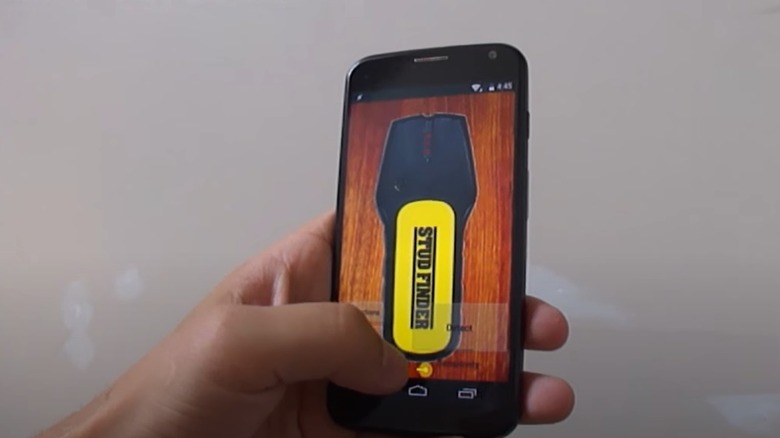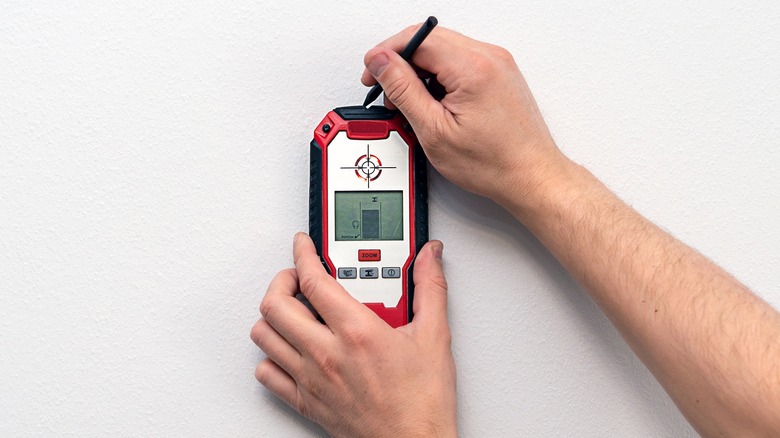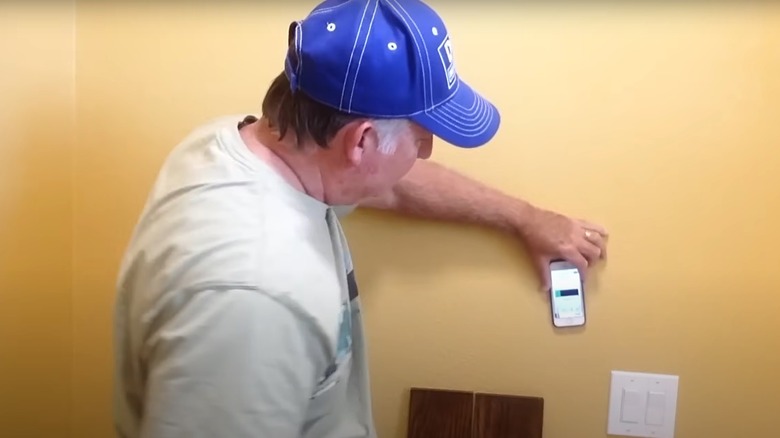Do Stud Finder Apps Actually Work?
If it seems like you can do almost anything with a smartphone these days, it's because you can. Whether it's something as complex as a digital camera or as simple as a flashlight, smartphones have replaced many items we used to carry separately. One tool that you could replace with your smartphone that you maybe haven't considered yet is one of the most important tools every homeowner should have – a stud finder. You have multiple options for stud finder apps to use with your smartphone, but do they actually work?
We sampled many reviews of all kinds of stud finder apps and found that most of them do a decent job for homeowners. Most of them aren't going to deliver perfect results every time, and some of them have some significant limitations, but they can help you roughly figure out what's inside your walls accurately most of the time.
Before we dig more into the apps, we should mention that if you already own and know how to use a stud finder as a standalone tool, you probably will want to stick with this device, rather than switch to an app. Modern stud finder tools are extremely accurate, and many of these tools can find electrical wiring inside the wall, ensuring that you don't drill into live wires accidentally. Some of these tools can even locate studs found inside concrete block walls, which can be highly valuable. Apps typically can't quite reach this level of accuracy or versatility. Still, if you don't have a stud finder on hand, an app will do the trick.
How a stud finder app on your smartphone works vs. a stud finder tool
The smartphone app stud finders make use of a magnetic sensor that's built into the device, called a magnetometer. The three-axis magnetometer allows the smartphone to measure its orientation in space. A compass app can use the sensor, too, to find true north by measuring the earth's magnetic field on each of the three axes. The stud finder app with the smartphone's magnetometer seeks a piece of metal behind the drywall. The magnet in the smartphone is attracted to the metal inside the wall, which is how it discovers items that you cannot see.
You could have metal or wood studs behind the wall. The sensor is able to measure for the metal studs easier, because they are large and solid. With the wood, however, the magnetic sensor would need to find the metal screws or nails that are holding the drywall against the 2x4 wood. Because these screws are tiny and randomly spaced, it can be more challenging to find them.
The magnetometer in use with your stud finder app works the same as a magnetic standalone tool. An electronic stud finder standalone tool works a little differently. It measures changes in density inside the wall to find what's inside the wall. The measurements on the electronic device change when the device is over a space that's hollow behind the drywall versus a space that has a 2x4 behind the drywall
What to know about the best stud finder smartphone apps
Apps that operate as stud finders are available for both iOS and Android smartphones. Many of them are free to use, although you can find some that require a subscription fee. Some are free to use initially, but they have in-app purchases available. Free apps tend to offer the same basic stud-finding features of the subscription versions, but they often have a few more features.
One of our favorite iOS apps is Stud Finder, which uses graphs to alert you when you find metal and has 4.4 stars on the App Store. (It's also available for Android.) It's free with ads, but you can pay $3.99 to have them removed. "At first I didn't think it was gonna work but then I used it. It was 100% accurate," wrote one happy user. Metal Detector is another good iOS app with 4.5 stars on the App Store. It costs $0.99 for a one-week subscription and $5.99 for a full-year subscription, but it also includes a built-in level and ruler.
Ultimately, a standalone stud finder typically can find objects with greater detail behind your drywall than the app can do. However, some people find that manipulating the buttons on the standalone stud finder tool can be quite challenging, which makes the app's digital screen easier to use. If you only use your standalone device occasionally, you may find it has dead alkaline batteries just when you need it. With the smartphone app, this isn't a problem.


